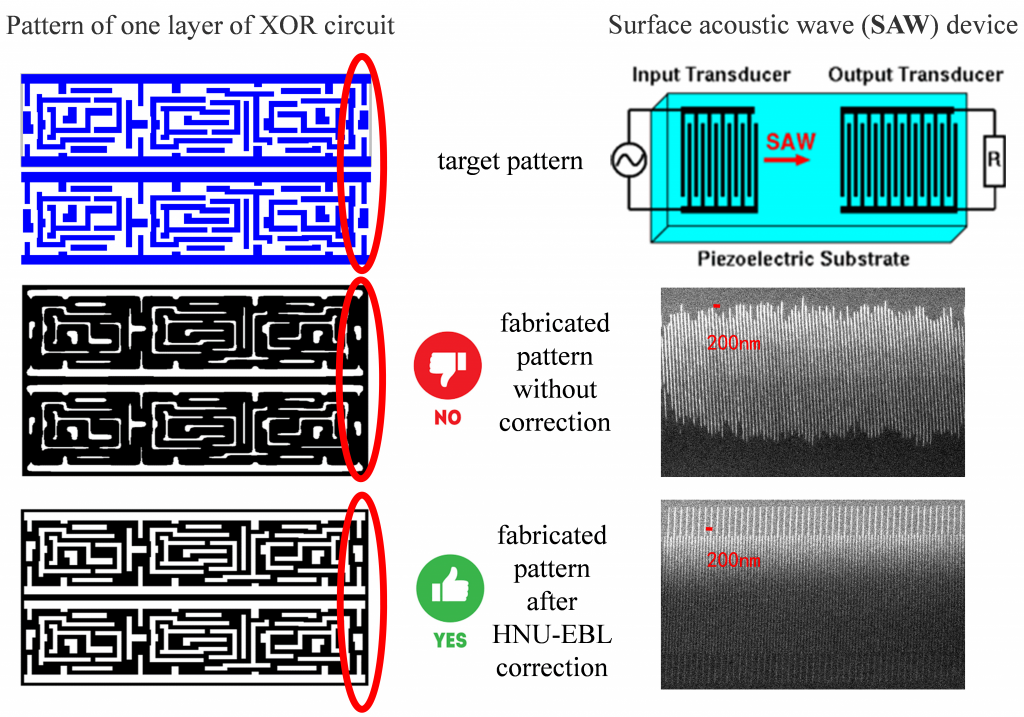1)Application Scenario
Electron beam lithography (EBL) is a high-resolution mask-less direct-write lithography technology. Because the electron beam spot size is very small (e.g., 1-2 nm), EBL is capable of fabricating advanced patterns with sub-10 nm feature size. However, when exposing a small target region (blue area in the figure below), the incident electrons are scattered and reflected by the resist/substrate, leading to undesirable exposure of a large region (orange and green areas). This is called the proximity effect, which is one of the major EBL secondary effects. Other EBL secondary effects, which also seriously jeopardize the EBL fabrication quality, include fogging effect, etch loading effect, charging effect, etc.

Therefore, in order to reliably fabricate a target pattern (first row in the figure below), one needs to correct these secondary effects before EBL fabrication. Otherwise, the fabricated pattern without correction (second row below) would serious deviate from the target pattern, leading to circuit misconnection and/or device malfunction. To solve this problem, the HNU-EBL software automatically adjust the incident electron dose distribution, to eliminate the negative impacts of EBL secondary effects. As a result, after HNU-EBL correction, the fabricated pattern (third row below) would agree well with the target pattern, leading to desirable circuit connection and/or proper device functionalities.

2)Project Goal
It is know that the EBL EDA software is indispensable to manufacture the EUV/DUV masks and to fabricate sub-10 nm prototype devices. To deter the technology development of certain countries, some international treaties (e.g., “Wassenaar Arrangement” [1]) and national laws (e.g., US Export Control Regulations [2]) forbid exporting these EBL-related EDA tools to countries like China, Russian, etc.
However, we believe that the EBL software tools should be used as friendly tools to improve people’s lives without discrimination, instead of hostile weapons against other countries. So, we are developing these tools from scratch by ourselves, and we offer free licenses to academia/industry users from all countries (click “License” tab at the top to obtain a free license).
[1] https://www.wassenaar.org/control-lists/
[2] https://www.govinfo.gov/content/pkg/FR-2020-10-05/pdf/2020-18334.pdf